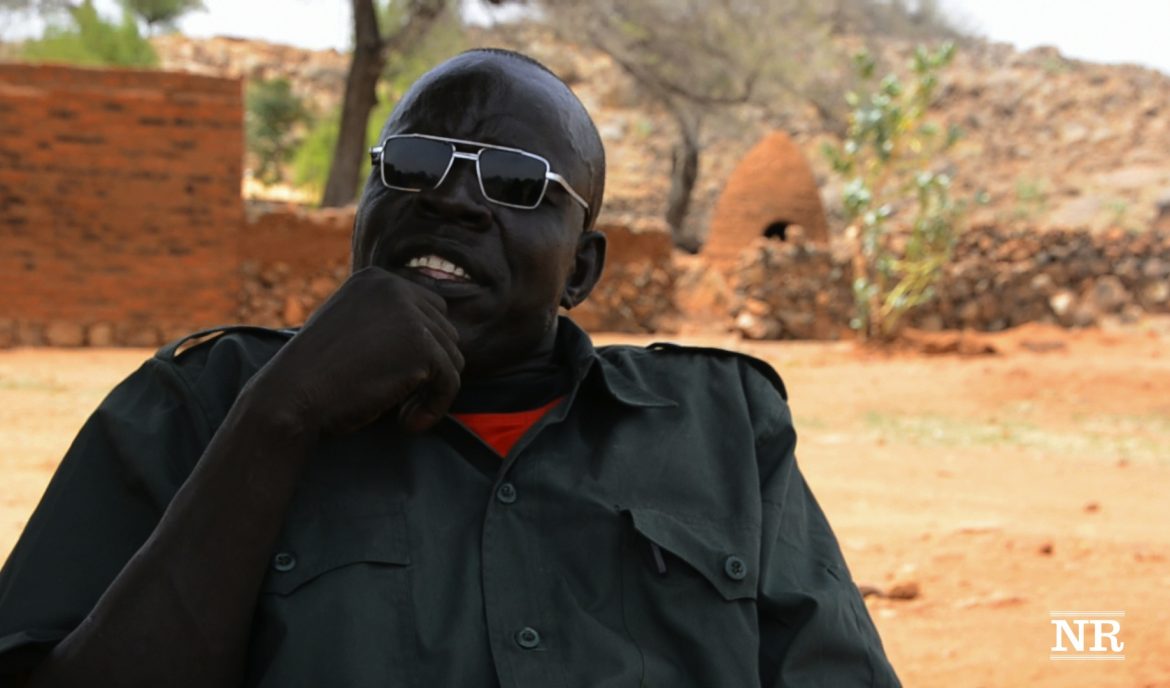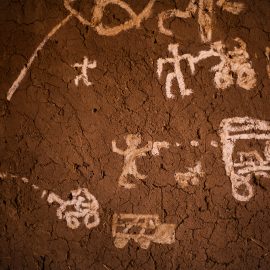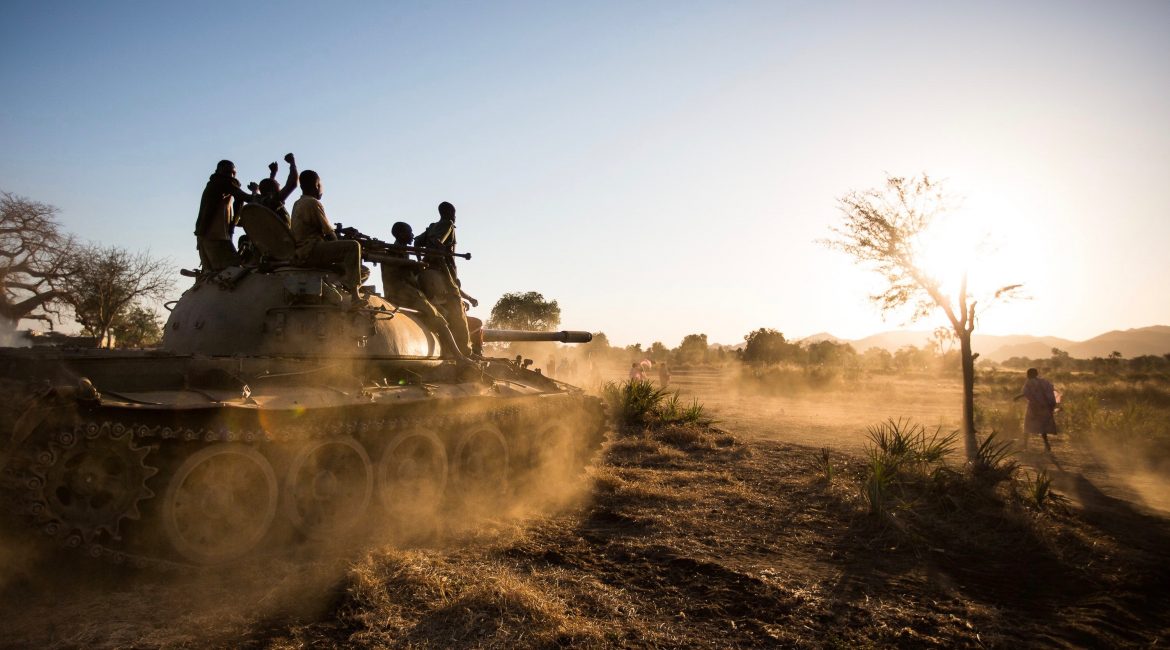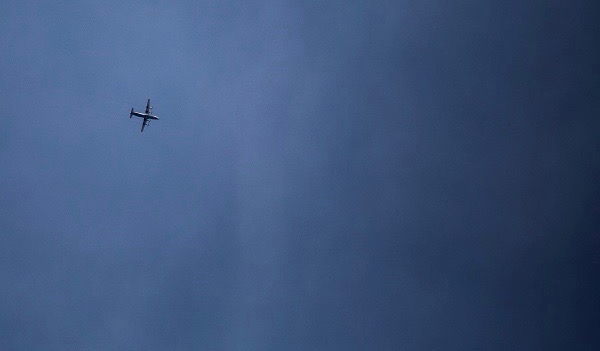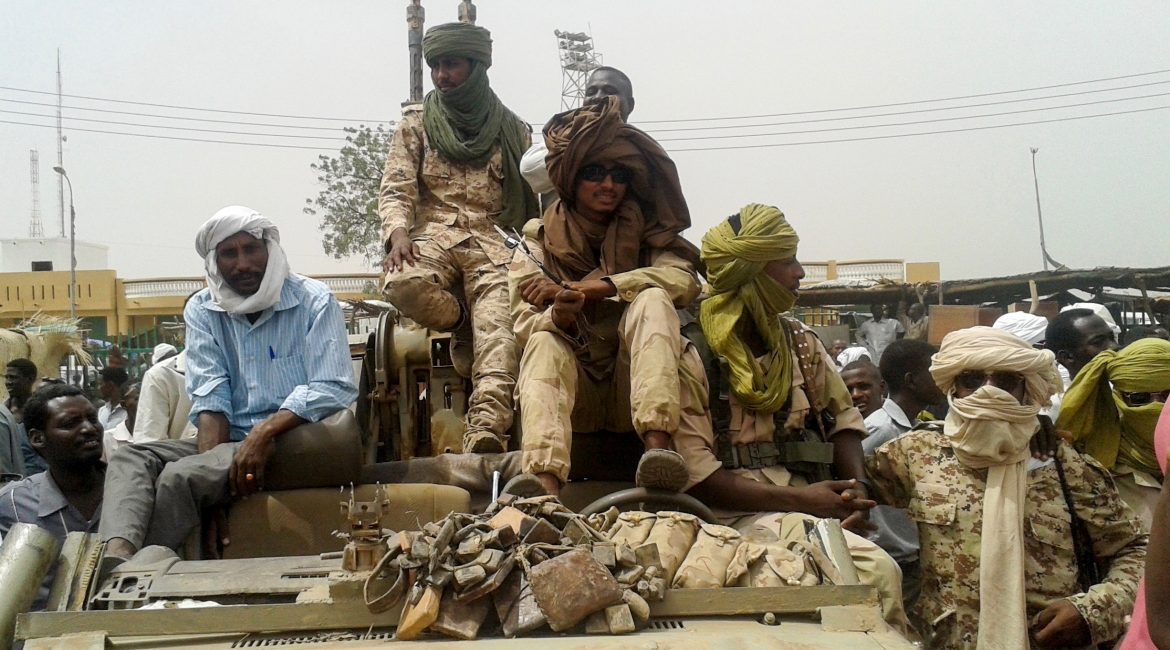On May 20, 2012, at exactly noon, approximately 2,000 soldiers in the Sudan Armed Forces and 2,000 South Sudanese militiamen rode 60 light vehicles into the village of Angolo.
Kwicha, a woman from Angolo, said she heard their trucks approaching. She climbed a rock, she said, and could see dust rising in Daramut.
“I told the people with me that it was the vehicles of the enemy,” she said. “They didn’t believe me and said it was just dust from the wind.”
When Gegemo, a deaf child in the village, motioned that two trucks had arrived, then the people believed her, she said. The soldiers and militiamen were heavily-armed, according to Officer Emjak from the Sudan People’s Liberation Movement-North (SPLM-N).
“Four thousand came here to Angolo,” Officer Emjak said. “And the size of our soldiers was one regiment.”
The militia, which primarily consisted of South Sudanese tribes of Dinka and Nuer, used vehicles, weapons, and uniforms supplied by the Sudan Armed Forces.
“I didn’t see any soldiers from Nuba,” Kwicha said. “I only saw South Sudanese and I knew them by the markings on their foreheads.”
After the government forces entered the village, they burned more than 25 civilian homes. They shot one elderly man and an 11-year-old boy tending his cows. The SPLM-N soldiers arrived at approximately 2 pm and engaged the government forces. After three hours of fighting, the government forces retreated on the road to Krasana, which is currently controlled by the Sudan Armed Forces.
During the fighting an additional three civilians were killed and four injured, according to Ibrahim, a medical assistant who treated the wounded. He said the wounded include: Kaka Tia Rahad, Magdalia Adam Kuwa, Tia Kuwa, and Kalid Abdul Rhaman.
“[The government forces] even shot small children,” Ibrahim said, “even a child that was only 30 days old. They shot him.”
Rhaman is 40 days old, Ibrahim said. The bullet hit the infant’s leg and back, he explained, and the mother was shot in the foot. In addition to the civilian causalities, one SPLM-N soldier was killed and one wounded. On the side of the government forces, five militiamen were killed, all of whom were of South Sudanese origin.
“I want to find the National Congress Party soldiers, Arabs or even other Nuba to fight with because they are fighting against us,” Officer Emjak said. “But I don’t want to find any Dinka fighting here in Nuba because we have separated from their country.”

